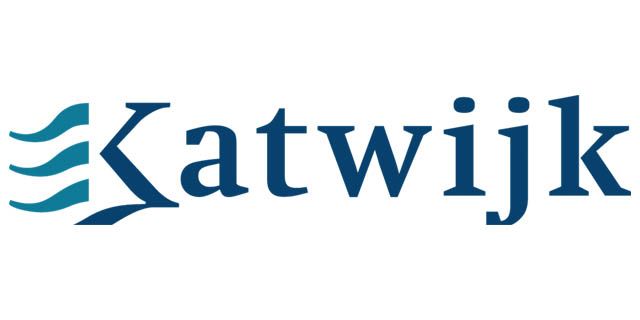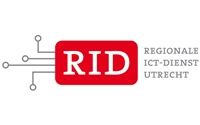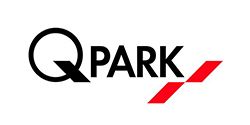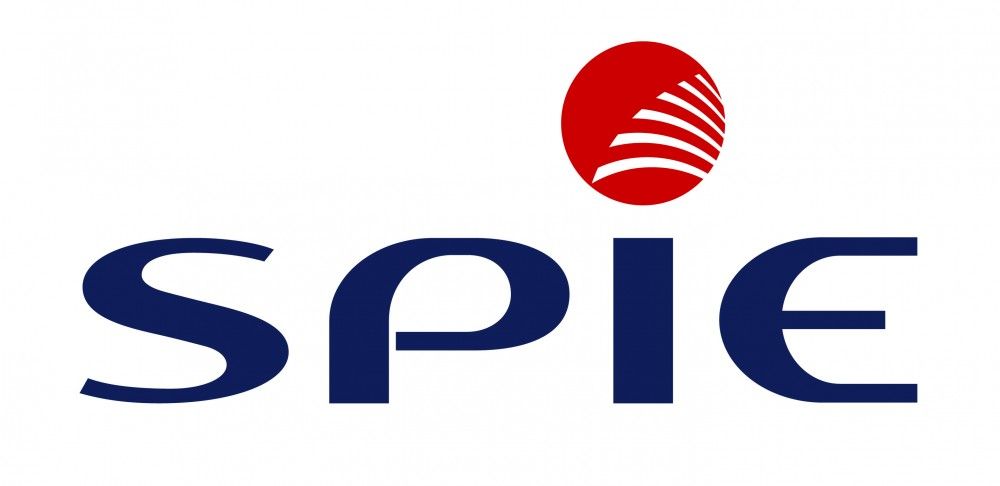Cursusbeschrijving
Deze 5-daagse training maakt deel uit van een traject van drie trainingen, die je de kennis en vaardigheden geeft die nodig zijn om een Windows Server 2012 of 2012 R2 Infrastructuur te implementeren in een bestaande omgeving. De drie trainingen in totaal omvatten het implementeren, beheren, onderhouden en leveren van services en infrastructuur in een Windows Server 2012-omgeving. Hoewel er enige overlap is in vaardigheden en oefeningen bij de drie trainingen, zal deze cursus vooral betrekking hebben op de initiële implementatie en configuratie van de basiselementen van Windows Server 2012 infrastructuur, zoals Active Directory Services (AD DS), netwerk services en Hyper-V Server 2012 R2 configuratie.
De labs in deze training zijn gebaseerd op Windows Server 2012 R2 en Windows 8.1.
{tab Doelgroep}
This course is intended for information technology (IT) professionals who have some knowledge and experience working with Windows operating systems and who want to acquire the skills and knowledge necessary to install and perform the initial configuration of a Windows Server 2012 or Windows Server 2012 R2 server in an existing Windows server environment.
{tab Voorkennis}
Before attending this course, students must have:
- A good understanding of networking fundamentals.
- An understanding and experience configuring security and administration tasks in an Enterprise environment.
- Experience supporting or configuring Microsoft Windows clients.
{tab Certificering}
This course maps directly to and is the preferred choice for hands-on preparation for the Microsoft Certified Solutions Associate (MCSA) Exam 410: Installing and Configuring Windows Server 2012, which is the first of three exams required for the MCSA: Windows Server 2012 credential.
{tab Vervolgcursussen} 20411C Administering Windows Server 2012 {tab Overige informatie}
This course will be delivered with digital courseware. In order to have the best learning experience you are asked to bring your own second screen to view the courseware. A second screen includes: tablets and laptops.
{tab Open rooster}
Deze 20410D Windows Server training verzorgen wij ook middels een open rooster. Deze organiseren wij op de locaties Amsterdam, Eindhoven, Nieuwegein, Rotterdam en Zoetermeer. Bekijk hieronder de trainingsdata voor de Windows Server trainingen. Heeft u interesse in een bundel van verschillende cursussen op Windows Server niveau? Dan kunt u een speciale pakketprijs aanvragen via de chat of email. {slider Amsterdam}
Op onze locatie in Amsterdam verzorgen wij regelmatig MS 20410D Windows Server training. Via onderstaande button kunt u zien welke data beschikbaar zijn:
{slider Eindhoven}
Op onze locatie in Eindhoven verzorgen wij regelmatig MS 20410D Windows Server training. Via onderstaande button kunt u zien welke data beschikbaar zijn:
{slider Nieuwegein}
Op onze locatie in Utrecht verzorgen wij regelmatig MS 20410D Windows Server training. Via onderstaande button kunt u zien welke data beschikbaar zijn:
{slider Rotterdam}
Op onze locatie in Rotterdam verzorgen wij regelmatig MS 20410D Windows Server training. Via onderstaande button kunt u zien welke data beschikbaar zijn:
{slider Zoetermeer}
Op onze locatie in Rotterdam verzorgen wij regelmatig MS 20410D Windows Server training. Via onderstaande button kunt u zien welke data beschikbaar zijn:
{/sliders}
{/tabs} {slider Cursusinhoud|closed}Module 1: Deploying and Managing Windows Server 2012
This module introduces the new Windows Server 2012 administrative interface.This module covers the different roles and features that are available with the Windows Server 2012 operating system. It also discusses the various installation options from which you can choose when deploying Windows Server 2012.
- Windows Server 2012 Overview
- Overview of Windows Server 2012 Management
- Installing Windows Server 2012
- Post-Installation Configuration of Windows Server 2012
- Introduction to Windows PowerShell
Lab : Deploying and Managing Windows Server 2012
- DeployingWindows Server 2012
- Configuring Windows Server 2012 Server Core
- Managing Servers
- UsingWindows PowerShell to Manage Servers
After completing this module, students will be able to:
- Describe Windows Server 2012.
- Describe the management tools available in Windows Server 2012.
- Install Windows Server 2012.
- Perform post-installation configuration of Windows Server 2012.
- Perform basic administrative tasks using Windows PowerShell.
Module 2: Introduction to Active Directory Domain Services
This module introduces Active Directory Domain Services (AD DS) in Windows Server 2012. It covers general ADDS infrastructure including forests, trees, schema, Global Catalog, Operations Masters, as well as the installation and configuration of Domain Controllers.
- Overview of Active Directory Domain Services
- Overview of Domain Controllers
- Installing a Domain Controller
Lab : Installing Domain Controllers
- Installing a Domain Controller
- Installing a Domain Controller by using IFM
After completing this module, students will be able to:
- Describe the structure of AD DS and explain the purpose of Organizational Units (OUs)
- Outline the purpose of Domain Controllers and explain why some hold special roles.
- Describe the different ways of installing a domain controller.
Module 3: Managing Active Directory Domain Services Objects
This module covers configuring Active Directory Objects such as users, groups and computers. It also covers functionality of Active directory Administrative tools and the configuration of user profiles. Additionally, it covers delegating permissions to perform AD DS administration.
- Managing User Accounts
- Managing Groups Accounts
- Managing Computer Accounts
- Delegating Administration
Lab : Managing Active Directory Domain Services Objects
- Delegating Administration for a Branch Office
- Creating and Configuring User Accounts in AD DS
- Managing Computer Objects in AD DS
After completing this module, students will be able to:
- Manage user accounts with graphical tools.
- Manage groups with graphical tools.
- Manage computer accounts.
- Delegate permission to perform ADDS administration.
Module 4: Automating Active Directory Domain Services Administration
This module covers using command-line tools to configure and administer Active Directory Domain Services. It introduces Windows PowerShell and Active Directory Cmdlets to perform bulk administrative operations.
- Using Command-line Tools for Administration
- Using Windows PowerShell for Administration
- Performing Bulk Operations with Windows PowerShell
Lab : Automating AD DS Administration by Using Windows PowerShell
- Creating User Accounts and Groups by Using Windows PowerShell
- Using Windows PowerShell to Create User Accounts in Bulk
- Using Windows PowerShell to Modify User Accounts in Bulk
After completing this module, students will be able to:
- Use command-line tools for administration.
- Use Windows PowerShell for AD DS administration.
- Perform bulk operations with Windows PowerShell.
Module 5: Implementing IPv4
This module covers IPv4 addressing. It details the various IPv4 components, covers Subnetting and Supernetting as well as details on general troubleshooting and configuring IPv4 addresses.
- Overview of TCP/IP
- Understanding IPv4 Addressing
- Subnettingand Supernetting
- Configuring and Troubleshooting IPv4
Lab : Implementing IPv4
- Identifying Appropriate Subnets
- Troubleshooting IPv4
After completing this module, students will be able to:
- Describe the TCP/IP protocol suite.
- Describe IPv4 addressing.
- Determine a subnet mask necessary for supernetting or subnetting.
- Configure IPv4 and troubleshoot IPv4 communication.
Module 6: Implementing DHCP
This module covers the installationand configuration of DHCP as well as managing a DHCP database. It also covers security and monitoring of DHCP, including auditing and logging.
- Installing a DHCP Server Role
- Configuring DHCP Scopes
- Managing a DHCP Database
- Securing and Monitoring DHCP
Lab : Implementing DHCP
- Implementing DHCP
- Implementing DHCP Relay
After completing this module, students will be able to:
- Install the DHCP server role.
- Configure DHCP scopes.
- Manage a DHCP database.
- Secure and monitor the DHCP server role.
Module 7: Implementing DNS
This module covers name resolution for Windows Server and clients. It details the installation ofa DNS server and configuring Active Directory Integrated DNS zones.
- Name Resolution for Windows Client and Servers
- Installing and Managinga DNS Server
- ManagingDNS Zones
Lab : Implementing DNS
- Installing and Configuring DNS
- Creating Host Records in DNS
- Managing the DNS Server Cache
After completing this module, students will be able to:
- Describe name resolution for Windows operating system clients and Windows Server servers
- Install and manage the Domain Name System (DNS) service
- Manage DNS zones
Module 8: Implementing IPv6
This module covers understanding and implementing IPv6 addressing. It covers configuration and troubleshooting as well as co-existence with IPv4 using transition technologies.
- Overview of IPv6
- IPv6 Addressing
- Coexistence with IPv4
- IPv6 Transition Technologies
Lab : Implementing IPv6
- Configuring an IPv6 Network
- Configuring an ISATAP Router
After completing this module, students will be able to:
- Describe the features and benefits of IPv6.
- Describe IPv6 addressing.
- Describe IPv6 coexistence with IPv4.
- Describe IPv6 transition technologies.
Module 9: Implementing Local Storage
This module covers the storage configuration options for Windows Server 2012, including managing disks and volumes and implementing file systems. It also coverscreating and managing Storage Pools.
- Overview of Storage
- Managing Disks and Volumes
- Implementing Storage Spaces
Lab : Implementing Local Storage
- Installing and Configuring a New Disk
- Resizing Volumes
- Configuring a Redundant Storage Space
After completing this module, students will be able to:
- Provide an overview of storage technologies.
- Manage disks and volumes.
- Implement storage spaces.
Module 10: Implementing File and Print Services
This module covers securing files, folders and network file shares, in addition to using shadow copies to protect network file shares. It also covers configuring network printing and creating a printer pool.
- Securing Files and Folders
- Protecting File Shares with Shadow Copies
- Configuring Network Printing
Lab : Implementing File and Print Services
- Creating and Configuring a File Share
- Configuring Volume Shadow Copy
- Creating and Configure a Printer Pool
After completing this module, students will be able to:
- Secure files and folders.
- Protect file shares by using shadow copies.
- Configure network printing.
Module 11: Implementing a Group Policy Infrastructure
This module will cover creating and managing Group Policy objects as well as how to configure group policy processing. It will also cover Implementing a central store for administrative templates.
- Overview of Group Policy
- Group Policy Processing
- Implementing a Central Store for Administrative Templates
Lab : Implementing Group Policy
- Configuring a Central Store
- Creating GPOs
After completing this module, students will be able to:
- Create and manage Group Policy Objects (GPOs).
- Describe Group Policy processing.
- Implement a central store for administrative templates.
Module 12: Securing Windows Servers by Using Group Policy Objects
This module covers increasing security on Windows servers by using Group Policy objects. It also covers configuring security settings via group policy.
- Windows Security Overview
- Configuring Security Settings
- Restricting Software
- Configuring Windows Firewall with Advanced Security
Lab : Lab A: Increasing Security for Server Resources
- Using Group Policy to Secure Member Servers
- Auditing File System Access
- Auditing Domain Logons
Lab : Lab B: Configuring AppLocker and Windows Firewall
- Configuring AppLocker Policies
- Configuring Windows Firewall
After completing this module, students will be able to:
- Describe Windows security.
- Configure security settings by using Group Policy.
- Restrict unauthorized software from running on servers and clients.
- Configure Windows Firewall with Advanced Security.
Module 13: Implementing Server Virtualization with Hyper-V
This module covers installing and configuring Hyper-V virtual machines as well as understanding and describing Microsoft Virtualization technologies. It also covers configuring virtual storage and virtual networks.
- Overview of Virtualization Technologies
- Implementing Hyper-V
- Managing Virtual Machine Storage
- Managing Virtual Networks
Lab : Implementing Server Virtualization with Hyper-V
- Installing theHyper-V Server Role
- Configuring Virtual Networking
- Creating and Configuring a Virtual Machine
- Using Virtual Machine Snapshots
After completing this module, students will be able to:
- Describe Microsoft’s Virtualization technologies.
- Implement Hyper-V.
- Manage Virtual machine Storage.
- Manage Virtual Networks
{slider Doelstellingen}
After completing this course, students will be able to:
- Install and configure Windows Server 2012.
- Describe AD DS.
- Manage Active Directory objects.
- Automate Active Directory administration.
- Implement IPv4.
- Implement Dynamic Host Configuration Protocol (DHCP).
- Implement Domain Name System (DNS).
- Implement IPv6.
- Implement local storage.
- Implement file and print services.
- Implement Group Policy.
- Secure Windows servers by using Group Policy Objects (GPOs).
- Implement server virtualization by using Hyper-V.
{/sliders}
Heeft u binnen uw organisatie een groep cursisten die graag willen deelnemen aan de eerste MCSA module (20410D) dan is het financieel aantrekkelijk om deze cursus bij u op locatie te organiseren. Vraag een vrijblijvende offerte voor de Installing and Configuring Windows Server 2012 training.
Excel Training Volgen?
Benieuwd naar de mogelijkheden van een Excel training? Vraag vrijblijvend meer informatie aan en we sturen je binnen 24 uur meer informatie op!


























